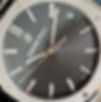What is "guillochage"? The art behind watch dials
- Waltana
- May 30
- 3 min read
Updated: Nov 14
In the refined world of watchmaking, the beauty of a dial often lies in its details. Among the most prestigious and time-honored techniques used to elevate these surfaces is guillochage — the art of engraving intricate, repeating patterns onto metal. But not all guilloché is the same. In fact, some of the most iconic patterns, like Tapisserie or Clous de Paris, are distinct signatures of heritage and craftsmanship.
So, what exactly is guillochage — and what are its most emblematic forms in haute horlogerie?
Guillochage, or guilloché, is a traditional decorative technique where complex patterns are engraved into a surface, typically using a rose engine or straight-line engine. The result is a dial that dances with light — deeply textured, precisely geometric, and unmistakably elegant. Historically, the technique was applied by hand or with hand-operated mechanical tools, making each dial a piece of art. Today, true guillochage is still practiced by select maisons and artisans, while other brands use modern techniques like CNC engraving or stamping to replicate the effect.
Notable guilloché patterns in luxury watchmaking:
Clous de Paris – Breguet, Patek Philippe and Vacheron Constantin
The most classical "guillochage", the first watchmaker to use this technique was Mr. Abraham Louis Breguet. This classic hobnail pattern consists of tiny pyramid-shaped knobs laid out in a uniform grid. It’s perhaps most famously seen on the Breguet Classique and Patek Philippe Calatrava ref. 3919. Each “clou” (nail) is engraved with meticulous precision, often using a rose engine. It’s both decorative and functional, reducing glare on the dial surface.
Tapisserie – Audemars Piguet
Perhaps the most recognizable of all guilloché-inspired patterns today, is the Tapisserie that appears on the dials of the Audemars Piguet Royal Oak and Royal Oak Offshore. It was originally created in 1972 for the first Royal Oak and was executed using a pantograph-guided burin on a rose engine. There are a few variations like Petite, Grande, and Méga Tapisserie and each square is precisely cut to catch light from multiple angles, giving the dial its iconic shimmer. Though AP brought the process in-house in 2012, it still relies on traditional engine-turning techniques and vintage machines — making Tapisserie a legitimate form of guillochage.
Flinqué – Jaeger-LeCoultre, Vacheron Constantin and Breguet
Flinqué refers to a guilloché base that is then enameled, often using translucent enamel that reveals the engraved pattern beneath. The result is a luminous, layered aesthetic, often found in high-jewelry or artistic dials.
Brands also explore other traditional patterns, such as: wave patterns (used by Breguet and Cartier), sunray guilloché, found in various classic dress watches, panier and Panier Alterné (Vacheron Constantin and Breguet) or grain d’orge (barleycorn), popular in pocket watches. Each of these motifs highlights different aspects of the craft — rhythm, texture, symmetry — and expresses the character of the brand.
Guillochage today: between tradition and innovation
While mass-produced versions of these patterns can be stamped or laser-etched, the traditional guilloché technique remains a prized hallmark of artisanal watchmaking. Only a handful of artisans and manufactures — like Audemars Piguet, Breguet, Voutilainen, and Vacheron Constantin — still use historical tools for true engine-turned dials. The continued appreciation of guillochage speaks to something timeless: the enduring human desire to blend function with beauty, engineering with emotion. Guillochage isn’t one single pattern — it’s a language of textures. Whether in the iconic squares of AP’s Tapisserie, the hobnails of a Calatrava, or the shimmering waves of a Breguet, each engraved dial tells a story of precision, patience, and passion. Next time you look at your wrist, take a closer look: your watch may be whispering centuries of craftsmanship through the play of light on its dial.
